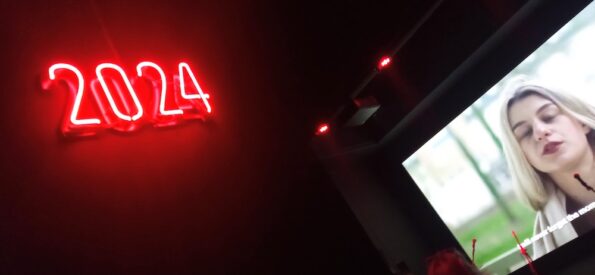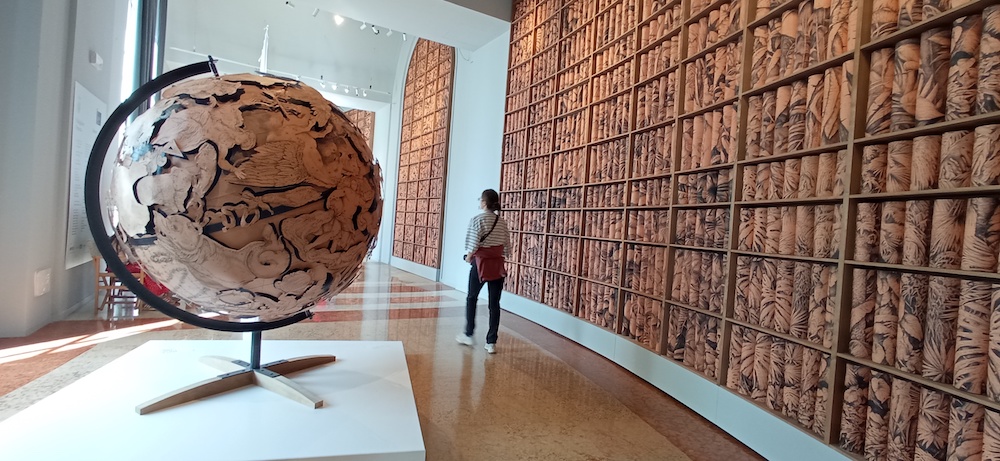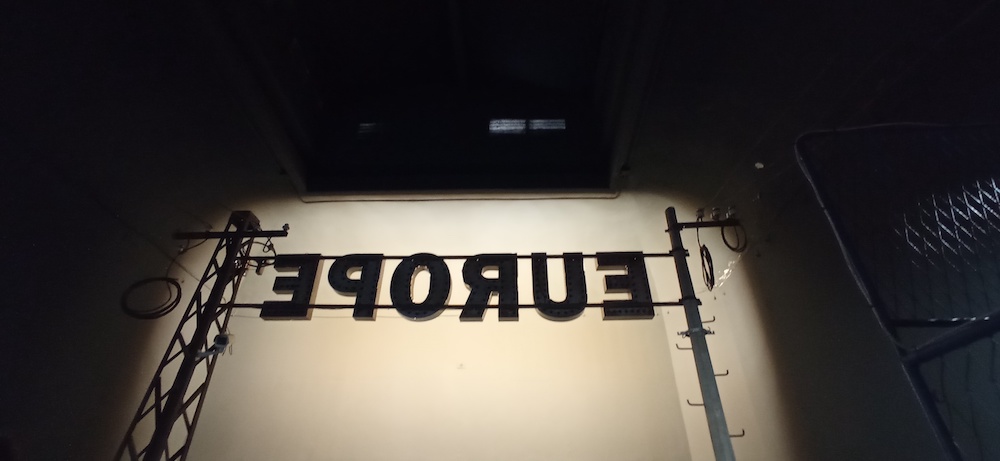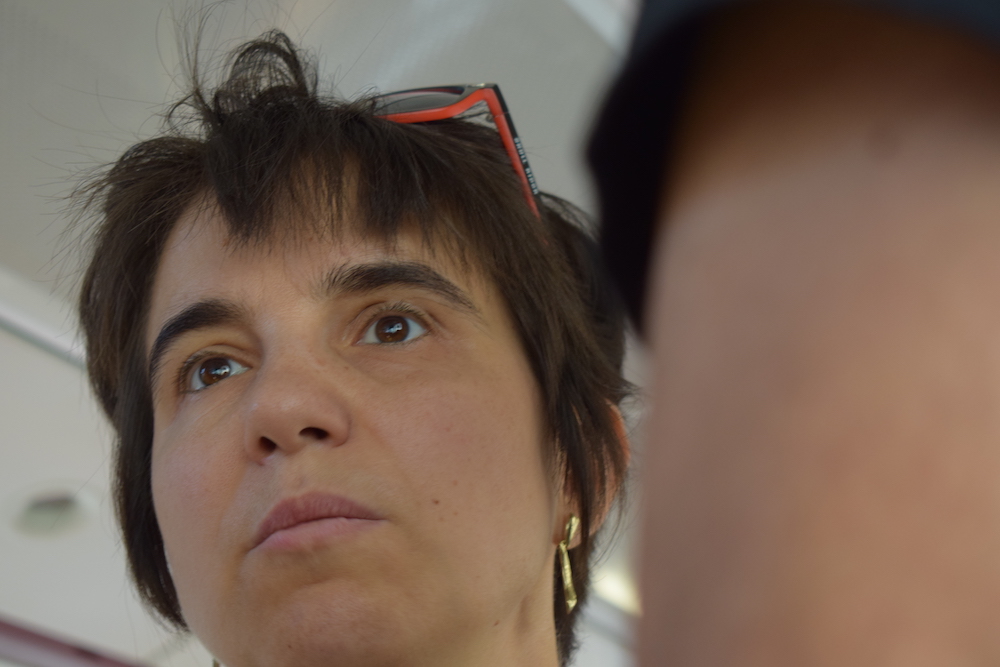Search
To search for an exact match, type the word or phrase you want in quotation marks.
A*DESK has been offering since 2002 contents about criticism and contemporary art. A*DESK has become consolidated thanks to all those who have believed in the project, all those who have followed us, debating, participating and collaborating. Many people have collaborated with A*DESK, and continue to do so. Their efforts, knowledge and belief in the project are what make it grow internationally. At A*DESK we have also generated work for over one hundred professionals in culture, from small collaborations with reviews and classes, to more prolonged and intense collaborations.
At A*DESK we believe in the need for free and universal access to culture and knowledge. We want to carry on being independent, remaining open to more ideas and opinions. If you believe in A*DESK, we need your backing to be able to continue. You can now participate in the project by supporting it. You can choose how much you want to contribute to the project.
You can decide how much you want to bring to the project.

The Venice Biennale is undoubtedly the longest-running contemporary art event, reaching its 60th edition this year. The proposal is divided into three main sections. The central exhibition, curated by Adriano Pedrosa, gives the motto of the biennale, which this year is “Foreigners Everywhere,” with the presentation of 331 artists (the highest number so far). Also, like every year, we find the national pavilions and the so-called collateral events, of diverse character, either to represent nations that aspire to statehood but are not recognized as such, like the Catalan pavilion (with a very interesting project by Carlos Casas curated by Filipa Ramos based on the text “Disputa del Asno” [Dispute of the Donkey] by Anselm Turmeda), or other curatorial and exhibition proposals that take advantage of the influx of so many people interested in contemporary art in the city.
Starting the visit at Giardini is customary, owing to the historical tradition of the biennial; it was founded there in 1895. Only almost a century later, Arsenale was incorporated to accommodate works that no longer fit in the first space. However, this might not be the case, and it is precisely one of the topics we will discuss later.
Giardini, located in the gardens of Castello, at the edge of the city, has at its entrance the oldest pavilions of the Biennale, among them Belgium, Holland, and Spain. Right after, we arrive at the great temple of art, which on this occasion is already presented as one of the first pieces, adorned with a very striking mural by the Brazilian collective MAHKU (Movimento dos Artistas Huni Kuin), inspired by sacred rituals with ayahuasca. In fact, this initial piece already alerts us to the possibility that what we are about to see is nothing more than a continuation of the colonialism of the 19th and 20th centuries, exploiting artists from the south for the consumption of the great north.
The exhibition aims to highlight a constellation of creators from the present and recent past who are considered foreigners from various perspectives and have been marginalized by predominant discourses. With this idea in mind, artists with indigenous, colonized, racialized, pathologized, migrant, dissident, and queer origins are incorporated into the Biennale, a European and North American art recognition temple.
Beyond the facade, the entrance to the curated enclosure is a declaration of intentions, or it should be. It is the place where we have found precious pieces in past editions that have left a mark on the Biennale’s imaginary. It is impossible not to think of Katharina Fritsch’s hyperrealist elephant in the last edition curated by Cecilia Alemani, or the giant rat kings of the 1999 Biennale curated by Harald Szeemann. Although Pedrosa has not opted for this monumentality and has made a more discreet entrance, the proposal by Nil Yalter reinforces its discourse.
After the first two rooms, we encounter works linked to pictorial abstraction, departing from non-conventional art, as an attempt to legitimize the rest of the proposal by showcasing unusual works. The difference with Cecilia Alemani’s discourse is that she did it courageously, perhaps because she had to fight for a long time for alternative discourses in art, or perhaps because of a much more precise and discursive mastery of museography, or perhaps because she was a woman.
This less daring trend is prevalent in much of this year’s edition. Its discourse is very classic and, to some extent, boring. This museography becomes unattractive to us, especially in Arsenale, where meters and meters of space are filled with works lacking a strong discourse or a surprise effect, as seen in the installation by Daniel Otero Torres. In other cases, reading the labels is impossible due to the darkness, such as in crucial sections like the Archive of Disobedience by Marco Scotini. Finally, at the end of the main corridor, an attempt to enshrine the queer is made with Aravani Art Projecte, by a cis and transgender collective from Bangalore (India) that must contend with the memorable piece that Barbara Kruger installed in the previous edition. The very end of the exhibition seems as though the curator had already exhausted the budget, leaving the last room in darkness with a piece by WangShui that does not withstand the pressure of being the finale.
Arsenale showcases indigenous artists, belittled as craftsmen, who have never had a place in the discourse of art. There is, then, continuity with the Biennale of two years ago, which broke from the classic canon and incorporated a large number of women. This idea has been tepidly embraced by Pedrosa, who does not fully capitalize on the opportunity. Despite including visionaries like Aloïse Corbaz or Madge Gill, he does not accord them the relevance as dissidents and novelties that they could have in the art market. Pedrosa’s museographic discourse is correct and academic, but it loses strength when it strives to be formally impeccable, diluting itself in a white cube and maintaining the exoticization and colonial gaze of the event, with a mostly white and tourist visitors.
However, the Biennale, like the city, never succumbs. It resists and finds ways to remain attractive. In contrast to other biennials, the political context implied by the exhibitions of national pavilions brings interesting elements, especially for those who have embraced Adriano Pedrosa’s idea of “stranger everywhere” to discuss and confront the topic from their own perspective, beyond the initial curatorial proposal. This is evident in the Belgian pavilion, one of the oldest, installed in 1908 in its privileged location next to the main entrance, and in the current project it addresses its despotic past in the Congo.
Another country deserving special mention for its excellence is the Spanish pavilion, which, through artist Sandra Gamarra, presents an institution, the Pinacoteca Migrante, curated by the pavilion’s curator, Agustín Pérez Rubio. Gamarra’s paintings are based on Spanish heritage collections from the time of the Empire to the Enlightenment, complemented by an installation consisting of twelve monuments with symbolic significance in the history of the former colonies. The project deals with colonization and coloniality unashamedly and from a complex perspective, addressing the ignorance imposed in the discourse of the colonizer and the restitution of the colonized.
Other pavilions also stand out for their dialogue in relation to the central curatorial discourse and for pointing out sensitive issues, perhaps in part assuming culpability or exposing a colonial past unabashedly, making it visible. These include the Egyptian pavilion, with Wael Shawky’s work on the 1882 revolution; the British pavilion with John Akomfrah; the Swiss pavilion with the work of Guerreiro do Divino Amor; the Netherlands with the collective Cercle d’Art des Travailleurs de Plantation Congolaise; and, finally, Brazil, which renames the pavilion Hãhãwpuá, the name given to the territory of the Pataxon people.
Australia received the award for the best pavilion with Archie Moore’s work on genealogy. Although we will leave pavilions out to avoid overextension, as a conclusion to understand what this “festival” means, we want to point out that this year marked the first time in the history of the Biennale that it was visited by the Pope of Rome. In the Vatican pavilion, located in a prison, the so-called Casa Reclusione Femminile Venezia “Giudecca,” a thirteenth-century monastery converted into a prison for single mothers, sex workers, and mentally ill patients in 1859, several artists presented a proposal, curated by Chiara Parisi and Bruno Racine, with restricted access.
In short, beyond its successful or unsuccessful proposal on the canon of art and the communion between art and geopolitics, Venice is still a business. Gathering 87 countries to exhibit every two years, either in rented spaces or in pavilions inside the venue, which are owned and financed by the participating countries, is still a spectacular magic trick when it comes to reducing expenses and increasing income. Because, who dares not to be in Venice?

Pavilion of the city of Venice, with the proposal Stante domestico, by Safet Zec and Pietro Ruffo. Photo: Ester Prat

Serbian Pavilion, with Aleksandar Denić’s piece, where through the recreation of scenes, he highlights the contemporary ramifications of colonialism and the permanent impact on the subjugation of peoples, capturing the anguish of society. Photo: Ester Prat
[Features Image: Polish Pavilion, with the piece Repeat after Me II by Open Group. Collective portrait of refugees from the Ukrainian war who remember the war through the sound of firearms and then invite the public to repeat them. Photo: Ester Prat].

Ester Prat Armadans is a cultural manager, specialist in strategic planning of cultural facilities and in the design and production of projects. She holds a degree in Art History (1999) and a diploma in Advanced Studies in Didactics of Social Sciences from the University of Barcelona (2001).
Currently, co-founder and co-director of the Master in Contemporary Art taught by IL3 – University of Barcelona since 2008. She is a member of the board of directors of the Centro de Estudios de Granollers and is an external evaluator of the journal Her&Mus. Heritage & Museography.
Since 2004 she is part of the technical team of Roca Umbert Fábrica de las Artes (Granollers – Barcelona).
"A desk is a dangerous place from which to watch the world" (John Le Carré)